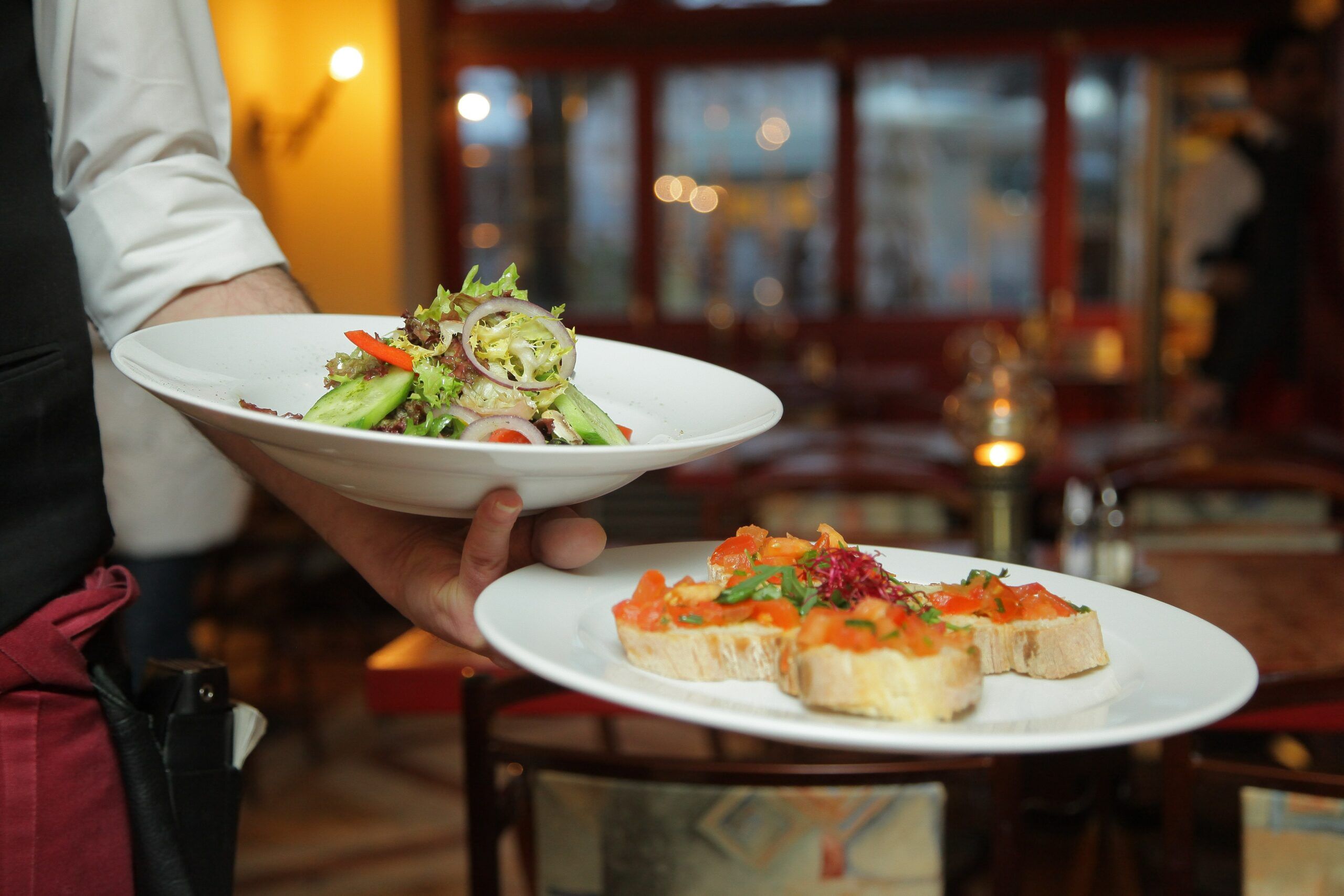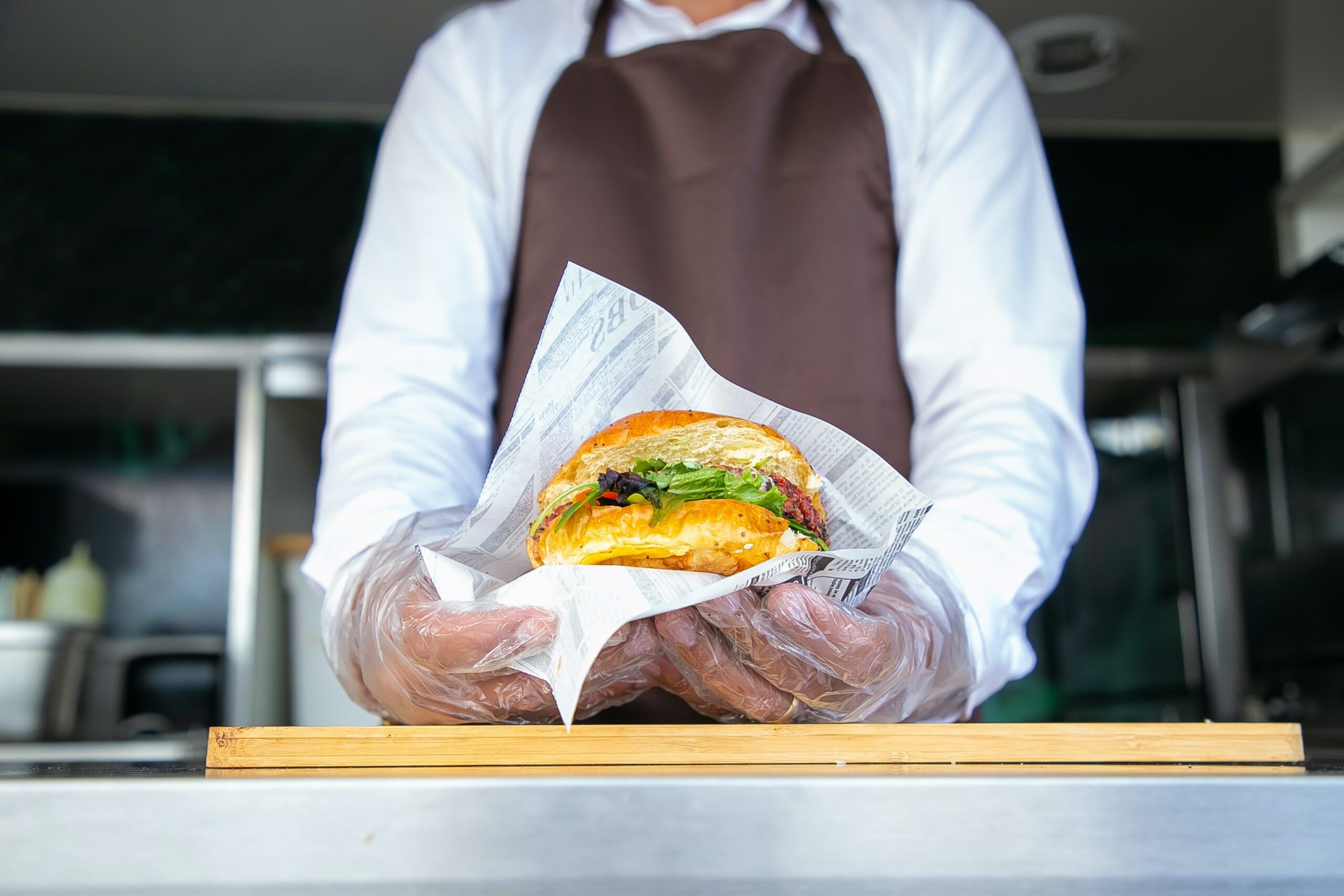- Use smaller plates and utensils to serve smaller portions, which will reduce the amount of food waste.
- Limit the number of menu items with high ingredient costs, such as lobster or filet mignon.
- When possible, make your own sauces, dressings, and condiments rather than purchasing them premade.
No question that running a restaurant is a tricky business. You have to worry about the quality of your food and the service you provide, but you also have to keep an eye on your bottom line.
One of the biggest expenses for any restaurant business is the cost of food, so it’s important to find ways to reduce your restaurant food cost without compromising the quality of your dishes.
After all, no one wants to dine at a place that’s poor in quality.
So how can restaurateurs keep their food costs down without sacrificing quality or flavor?
With that in mind, here are 9 good ways how to control food cost to help reduce your food costs and keep your business in the black:
1. Serve tap water instead of bottled water to save on costs.
Perhaps the most obvious way to reduce your restaurant’s food costs is to serve tap water instead of bottled water.
This change will save you money on the cost of the water itself and the cost of transporting and storing bottled water. In addition, serving tap water will help to reduce your restaurant’s environmental impact.
While some diners may be hesitant to order tap water in a restaurant, there are ways to make it more appealing. Serve tap water in attractive glassware and offer a variety of delicious fruit-infused waters for guests to enjoy.
You can also create a sign that proudly declares your restaurant’s commitment to sustainability.
By making tap water more appealing and easy to order, you can help to reduce your restaurant’s food costs without sacrificing quality or service.
2. Use smaller plates and utensils to serve smaller portions, which will reduce the amount of food waste.
There’s nothing worse than coming to the end of a meal and realizing you’ve hardly made a dent in your plate. You pushed the food around and took a few bites here and there, but it’s still there staring back at you for the most part.
And then comes the dreaded question from your waiter: “Would you like a box for that?” Suddenly, the leftovers that were once so unappetizing are now your only hope of salvaging something from the meal. But take heart!
There are so many ways to reduce the amount of food waste in your restaurant, and it all starts with smaller plates and utensils.
Using smaller plates and utensils, you can serve smaller portions and still give the illusion of a full plate. This cuts down on food waste but can also help reduce your restaurant’s food costs.
After all, every bit of uneaten food is money down the drain. So next time you’re looking to cut down on food waste, remember: smaller is better!
3. Purchase in-season fruits and vegetables for menu items, as they will be cheaper than out-of-season produce.
As any chef knows, working with seasonal ingredients is one of the best ways to create delicious and affordable dishes. In-season produce is not only fresher and more flavorful, but it also tends to be cheaper than out-of-season options.
For example, tomatoes are in season during the summer, while oranges are in season during the winter.
By incorporating these fruits and vegetables into menu items, restaurants can reduce food costs while still serving delicious and healthy dishes.
A summer salad made with fresh tomatoes and cucumbers would be affordable and refreshing, while a winter soup made with oranges and carrots would be hearty and flavorful.
By being aware of what produce is in season, restaurants can easily create affordable and delicious dishes that will please customers and save money.
4. Limit the number of menu items with high ingredient costs, such as lobster or filet mignon.
No one of us can deny the allure of a menu item with a high price tag. Whether it’s the luxurious feeling of ordering lobster at a seafood restaurant or the satisfaction of enjoying a well-aged filet mignon at a steakhouse, these dishes always seem to leave a lasting impression.
However, as any restaurant owner knows, offering too many high-cost items can quickly eat into profits. For this reason, it’s important to carefully consider the number of pricey menu items you offer.
By limiting the number of these items, you can help to keep your food costs under control while still providing your customers with an enjoyable dining experience.
So next time you plan your menu, remember to keep an eye on those ingredient costs. A bit of proper planning can go a long way in helping to reduce your restaurant food costs.
5. Train your staff to properly portion food so that there is no waste.
Teaching your staff how to properly portion food can reduce your restaurant food costs and help ensure that your customers are getting the most out of their meals. The first step is to assess the size of your portions. Are they too small? Too large? Just right?
Once you’ve determined the proper portions for your menu items, train your staff accordingly. They should know exactly how much food to give each customer, so there is no waste. In addition, you’ll want to ensure that your staff monitors food waste throughout the meal service.
If they see that a customer isn’t finishing their food, they can remedy the situation by offering a smaller portion next time or giving them a take-home container.
Following these simple tips can reduce your restaurant’s actual food cost and help ensure that your customers get the most out of their meals.
6. Get creative with side dishes – offer options that are less expensive than traditional sides like mashed potatoes or rice pilaf.
Your Inbox, Your Rules!
Tailor your newsletter with the topics you're most interested in.
While traditional side dishes like mashed potatoes and rice pilaf can be delicious, they can also be costly. If you’re looking to reduce your restaurant’s actual food costs, getting creative with your side dish choices is essential.
There are so many affordable and delicious options that can complement any entrée. Adding a bit of variety to your menu can pay off – especially regarding side dishes.
Getting creative with side dishes is a great way for controlling food costs without skimping on flavor or quality.
For example, why not try roasted cauliflower instead of mashed potatoes? Cauliflower is a versatile vegetable that can be flavored in many different ways.
It’s also a big source of vitamins and minerals. Another option is quinoa salad – it’s packed with protein and fiber and perfect for guests looking for a healthy option.
Beets are another great choice – they’re inexpensive and can be roasted, grilled, or even pickled. So next time you’re looking to reduce your restaurant food costs, get creative with your side dishes – your guests will thank you!
7. Use cheaper cuts of meat for menu items that are simmered or braised, as they will become more tender and flavorful with slow cooking.
As any chef knows, not all cuts of meat are created equal. The tenderloin is the most expensive cut, while the cheaper cuts are often tougher and less flavorful. However, these cheaper cuts can actually be quite delicious if cooked properly.
The tough fibers break down when simmered or braised, and the meat becomes incredibly tender. The slow cooking also allows the flavors to develop and meld together, creating a rich and complex dish.
So if you’re looking for ways to manage your food prices to save some money on your restaurant food costs, consider using cheaper cuts of meat for menu items that are simmered or braised.
With a bit of time and patience, you can create some truly unique dishes that your customers will love and reach the ideal food cost you’ve dreamed of.
8. When possible, make your own sauces, dressings, and condiments rather than purchasing them premade.
If you want and need to cut down on your restaurant food costs, one easy way is to make your own sauces, dressings, and condiments rather than purchasing them premade. Not only is this more cost-effective, but it also allows you to be more creative with your flavors and ingredients.
Start by making a simple vinaigrette: whisk together olive oil, vinegar, salt, and pepper to taste. Then, get creative with your add-ins! Add a bit of dijon mustard for some tang, honey for sweetness, or smoked paprika for a bit of heat. The possibilities are endless.
Another great option is homemade Thousand Island dressing. Simply combine ketchup, mayonnaise, diced onions or pickles, Worcestershire sauce, and season to taste with salt and pepper. This creamy dressing is perfect for slathering on burgers or dipping fries into.
Finally, no condiment arsenal would be complete without a good BBQ sauce. Start with a base of ketchup and vinegar, then add brown sugar, garlic powder, onion powder, smoked paprika, and cayenne pepper for some heat.
Give it all a good whisk until combined, and you’re ready to glaze, baste, or dip to your heart’s content.
9. Take advantage of discounts and specials offered by food purveyors – they may be willing to give you a better deal if you purchase in bulk.
Regarding discounts, no one is more willing to offer a better deal than your local food purveyor. And why wouldn’t they? They want your business.
So if you’re looking to reduce your restaurant food costs, take advantage of the discounts and specials they offer for purchasing in bulk. You will be surprised at how much you can save.
But it’s not just about getting the best deals on food. Purchasing in bulk also has its advantages when it comes to storage and shelf life.
Buying larger quantities means you can keep food fresher for longer and reduce the amount of packaging waste you produce.
So not only will you be saving money, but you’ll also be doing your part for the environment. Win-win!
A bonus tip: keep track of food inventory to avoid extra expenses.
Like most restaurant owners, you know that food costs can quickly get out of control if you’re not careful. After all, there are a lot of mouths to feed and only so much money to go around.
That’s why it’s crucial for your restaurant to keep track of your food inventory, so you can avoid those extra expenses when it comes time to restock your shelves.
By keeping an eye on what you have on hand, you can be sure to only purchase what you need when you need it and reduce food cost.
Using automated inventory software in the industry of hospitality can save up a lot on your food cost. It will help you save money in the long run, keeping your restaurant running smoothly and efficiently.
You can also check out 34 Restaurant Industry Statistics and Trends in 2022 where we compiled the latest data and reports concerning the restaurant industry to get the essential updates for 2022.
Make your restaurant more profitable.
Congratulations! You’ve made it to the end of this article on ways to reduce your restaurant food costs. Hopefully, by now, you have a good understanding of how you can save money on food without sacrificing quality or flavor.
Don’t forget to check Orders to get help when streamlining your online orders. It provides your restaurant with the tools and partnerships that you will need for today’s delivery-centric industry.
As the world becomes more health-conscious, people eat less and cook more at home. Restaurants had to get creative to stay afloat, and one way they’re doing that is by reducing food costs.
So if you’re looking to make your restaurant more profitable, consider implementing some of the tips and tricks mentioned in this article to control food costs and reduce food waste.



